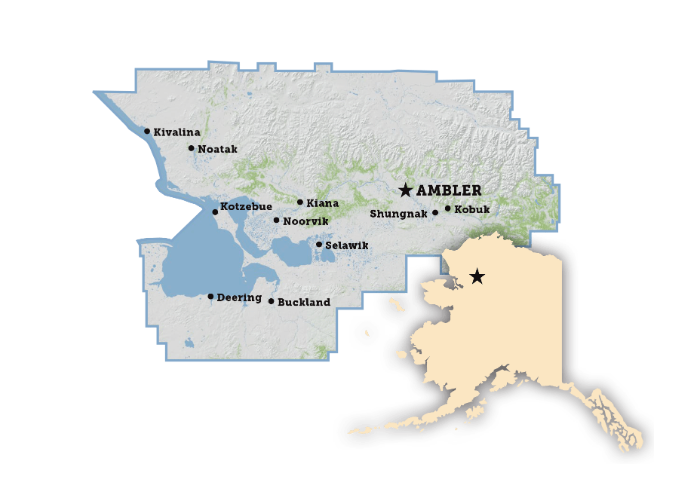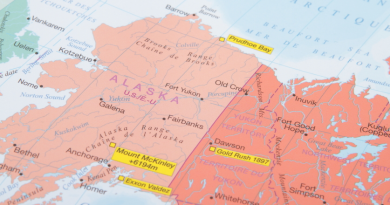Alaska Ambler Road project back in focus as company outlines vision for work ahead

From Scandinavia to Siberia to the North American Arctic, a push is underway to secure new supplies of minerals central to clean-energy technologies and strategic security.
The Ambler Mining District in northwest Alaska is one of the latest projects again in focus.
The U.S. government advanced the project in October, when President Donald Trump approved the Alaska Industrial Development and Export Authority’s appeal and directed federal agencies to reissue the permits needed for the Ambler Road, a 211-mile industrial route that would provide access from the Dalton Highway to the district.
The Trump administration’s announcement overturned the 2024 rejection of the road by the Biden administration over environmental concerns.
Trump said the decision to go ahead with the road project was vital to national defense and economic prosperity, and announced the government was also taking a 10 per cent equity stake in Trilogy Metals, the Canadian company looking to develop the site along with Australian partner South32.
Ambler Metals, the company leading exploration there, said the project can play an important role both locally and nationally.
“By providing a substantial domestic source for these critical materials, mining in this region would directly counter the current, precarious reliance on foreign suppliers, particularly addressing our dependence on countries like China,” Kaleb Froehlich, managing director of Ambler Metals, said in an email interview.
“By working together with the federal government, we can responsibly unlock these critical resources for the entire U.S. economy, including Alaska.”

Where the North sets the terms
The Ambler region’s northern environment shapes all stages of the project planning.
Permafrost stability, thawing ground conditions and the short work season imposed by the region’s extreme weather are some of the significant constraints to working in the North. It limits schedules, raises costs and influences how equipment and infrastructure needs to be designed.
Ambler Metals says its annual work plan maps out what needs to get done each season— from work at site to preparing equipment and supplies — so operations proceed within the region’s constraints.
Looking ahead, the company said it would rely on construction methods that have been proven in the North, including reinforced surfaces and techniques that prevent heat from migrating into the soil, to lessen impacts on frozen terrain.
While the company says it doesn’t encounter permafrost at its current exploration sites, it notes that permafrost mitigation measures would be incorporated during road development.
“We don’t encounter permafrost in our work locations, and permafrost is primarily an issue for ground disturbing activities, which we keep at an absolute minimum during exploration,” Froehlich said.
“During development, design features, such as road thickness, will be utilized to mitigate the presence of permafrost as is commonly done in arctic development.”
Communities weigh job and economy creation and impacts on subsistence livelihoods
The Ambler exploration and development activities are permitted by the State of Alaska and the Northwest Arctic Borough, the region the project is located in, and include reclamation requirements and mitigation measures to help protect water, wildlife, and land.

For the proposed road, the Alaska Industrial Development and Export Authority has said the route would be private and restricted to industrial use, with gates to limit public traffic and minimize the impact on subsistence hunting and activities.
Other planned design measures include fish-passage culverts and caribou protection zones.
Opponents, including environmental organizations and Indigenous community members and groups, argue that even restricted roads can encourage additional activity over time, raising concerns about the cumulative impacts on wildlife behavior.
Meanwhile, other Indigenous communities have long pushed for the project saying it would bring jobs and economic spinoffs to some of the state’s poorest communities, with the Northwest Arctic Borough saying in its 2021 resolution in support of the Ambler access road construction that “…responsible resource extraction is essential to the future of the Northwest Arctic Borough and its provision of public services to the region’s residents.”
- Copper: electric vehicles, power transmission lines, renewable energy systems
- Cobalt: lithium-ion batteries
- Gallium & Germanium: semiconductors, solar cells, fiber-optic components, advanced radars
- Zinc & Lead: alloys, galvanizing, energy-storage components
Investments in training, local hiring
Ambler Metals points to its 2011 Upper Kobuk Mineral Project Agreement with the NANA Regional Corporation, an Alaska Native corporation representing Iñupiat shareholders in the Northwest Arctic region, which includes commitments to local hiring, training and benefits, as an example of how companies can partner with communities.
Since then, the company says it has provided more than $400,000 in scholarships to NANA shareholders for vocational training and post-secondary studies.
“Federal approvals or state permits may move the process forward, but they do not – and cannot – replace the need for genuine, lasting community support,” Froehlich said.
Ambler Metals said it wants to demonstrate that conservation and resource development can align, with the outcome depending not only on engineering, but on how the project navigates the region’s environmental, cultural and political realities.
“We certainly believe that development in the region can serve as a model, especially through our emphasis on what we call “social license to operate” as well as responsible design,” Froehlich said.
“Social license isn’t a legal requirement; it’s a moral one.”
Comments, tips or story ideas? Contact Eilís at eilis.quinn(at)cbc.ca
Related stories from around the North:
Canada: PM, Manitoba reaffirm Arctic Gateway push, though project absent from recent federal priority list, CBC News
Greenland: Greenland’s leader hails EU as trusted friend and urges investment in its minerals, The Associated Press
Norway: Lawmakers in Norway make a deal opening up for deep sea mining in Arctic Ocean, The Associated Press
Russia: Putin in Arkhangelsk: Arctic industry and infrastructure on agenda, The Independent Barents Observer
Sweden: Just how significant is the discovery of rare earth metals in Arctic Sweden?
United States: Washington moves to secure Arctic rare earths with potential stake in Greenland mine, Reuters



